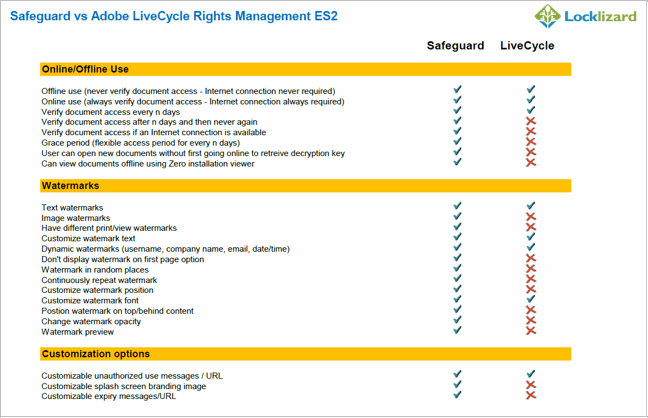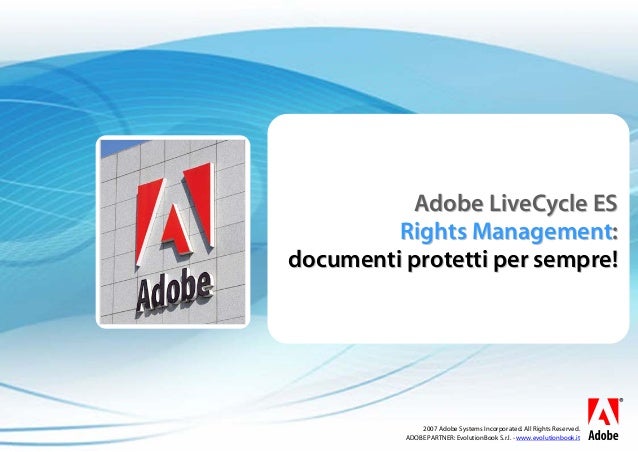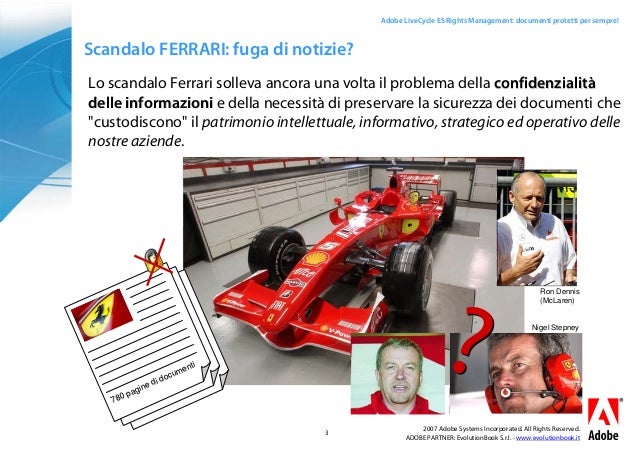Adobe on Monday introduced a major update to its LiveCycle software for building business-oriented web applications, including an option to deploy LiveCycle-based applications onto the cloud.
- Adobe LiveCycle Designer is a forms authoring tool published by Adobe Systems, intended as a one-stop design tool to render XML forms as PDF or HTML files.
- Adobe Livecycle Rights Management ES2 competitor analysis. Adobe LiveCycle Rights Management ES2 is a document collaboration system that uses policies to enforce limited document controls. To access a protected document, users must login with a username and password. This defeats sharing of documents since login credentials can be given to others.
LiveCycle is used to build web applications that allow an enterprise or government body to interact with its customers and partners. For instance, HM Courts Service is using it to build a system that will provide electronic filing and management services to users such as legal firms.

Adobe LiveCycle’s third-party reference platforms state the specific patch level of third-party infrastructure that was current during the development and release of each version of LiveCycle, and from the minimum patch/service pack level of the infrastructure supported by that version of LiveCycle.
LiveCycle Enterprise Suite 2 (ES2), announced at the Adobe Max 2009 conference in Los Angeles, includes improvements to developer productivity, better integration with Flash and PDF technologies, integration with the Flash Builder developer tool, a new collaboration service, a new framework for rapidly assembling web applications and more options for access by mobile devices.
As of early next year, developers will be able to deploy LiveCycle ES2 as managed production instances on the cloud via the Amazon Web Services cloud computing environment, according to Adobe. The cloud-based deployment option, designed to reduce cost of ownership, will include round-the-clock monitoring by Adobe and support including product upgrades.
Developer productivity improvements include a new set of Solution Accelerators, which provide best practice methodologies, UI and process templates and code building blocks for particular types of applications.
The new accelerators include a Benefits and Services Delivery Solution Accelerator for government bodies, an Electronic Submissions Solution Accelerator for life sciences organisations and a Human Capital Applications Solution Accelerator for businesses and government entities, Adobe said in a statement.

ES2 is more 'consumerised' than the first iteration of the suite, which came out in 2007, Adobe senior systems engineer Rupert Knowles told ZDNet UK on Thursday. 'People expect enterprise systems to behave in the same way as consumer experiences,' Knowles said, noting that this shift is seen in the slicker user interface and the increased emphasis on collaboration in the updated software.
A new plug-in for Adobe Flash Builder 4 beta allows developers to embed LiveCycle ES2 technologies into any Flash-based application, the company said. The update also includes the new LiveCycle Collaboration Service, a hosted service that allows real-time, multi-user collaboration to be built into existing or new web applications.
LiveCycle Mosaic ES2, another new feature, is a framework for rapidly assembling web applications using user interface application components called 'tiles'.
Finally, LiveCycle Workspace ES2 Mobile gives users access to LiveCycle ES2 from iPhone, BlackBerry and Windows Mobile devices, allowing users to interact with tasks remotely.

Adobe Livecycle Rights Management Server
LiveCycle ES2 is expected to become available before the end of 2009.
Adobe Livecycle Tutorial
David Meyer of ZDNet UK contributed to this report.